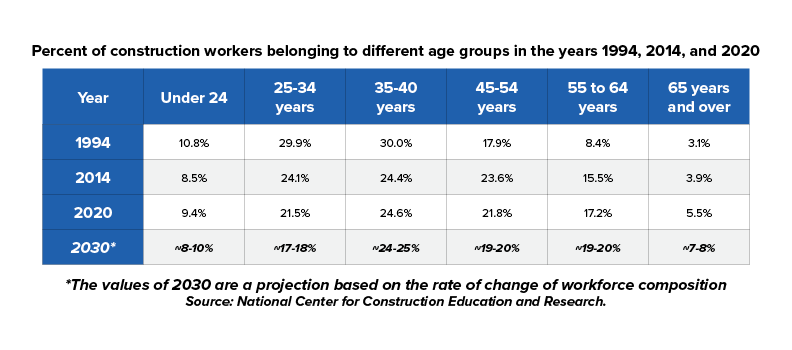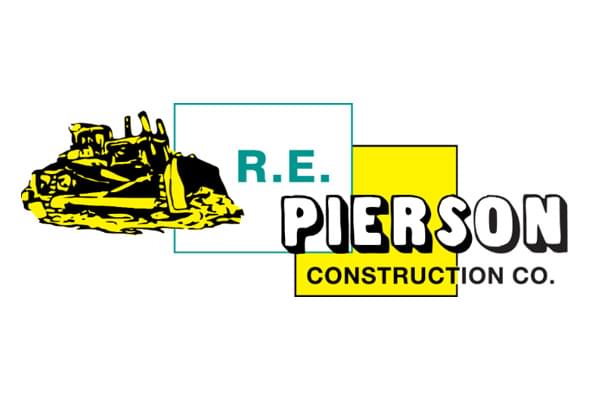The construction industry is at a pivotal moment. With an aging workforce, evolving technology, and a need to adapt to changing demands, the future of construction hinges on the ability to attract, develop, and retain a skilled workforce. With the younger generation largely not realizing what a fulfilling and lucrative career can be had in construction, many challenges exist, such as developing the crucial role of women in the industry and remaining competitive with top-tier talent.
Shaping your company’s future for the better will all come down to how these issues are handled.
Addressing the Worker Shortage
One of the biggest challenges currently facing the industry is the shortage of skilled workers. While construction careers offer competitive pay, many young people are unaware of the opportunities available to them, with the misconception that construction jobs are low-skill and low-paying.

Truth is, there are ample opportunities for new workers, including both college graduates and skilled tradespeople from parallel industries. By catering to all types of workers, the construction industry is evolving to offer above-average pay and exciting trajectories for laborers, foremen, supervisors, workers with learned skills, and much more.
Traditionally, there has been a misconception that a college education is not best utilized for the construction industry. However, with colleges now offering specialized programs in construction management and project management, perceptions are changing. These programs provide students with the skills and knowledge they need to succeed in the industry while also helping to elevate the status of construction-related careers.
More students are considering careers in construction, leading to a more diverse and skilled workforce. For companies looking to start recruiting, career fairs at colleges provide an excellent opportunity for construction companies to connect with young talent and showcase the opportunities available in the industry.
The Role of Women in Construction
As companies in the industry adapt to the rapidly changing state of the workforce, women need to be a bigger part of the conversation. Historically, women have not been represented in the construction field. With a significant number of female workers today interested in taking on construction roles, encouraging even more young women is a great way to find new talent.
Attracting and retaining women in the industry, along with the new generation, requires sufficient recruiting.

Source: U.S. Bureau of Labor Statistics
Although there is an increase in women’s presence in the construction industry currently underway, the female demographic only makes up about 10-14% of the workforce. A major barrier to entry often stems from women not considering the industry as a viable career option. However, initiatives aimed at high schools and colleges are actively working to change this perception. One significant challenge is creating a supportive and welcoming environment, and to address this, there is a need for female role models and mentors within the industry.
Organizations such as the National Association of Women in Construction (NAWIC) are providing women with the resources and support needed to succeed in the field. Similarly, the American Road & Transportation Builders Association (ARTBA) promotes a Women Leaders Council that involves career-changing mentorships, along with an Industry Leadership Development Council (ILDP) program for developing rising stars in construction, regardless of their gender.
WTS is also a great organization that was founded in 1977 and has never ceased advocating for gender equity. Likewise, the Associated General Contractors (AGC) of America has more than 170 Student Chapters nationwide. The totality of all of these organizations is helping to change the face of the construction workforce.
Additionally, basics like having nice clean restroom facilities on a jobsite will go a long way in attracting and keeping women working in the field. Frequently calling attention to this issue is Tricia Kagerer, Executive VP of Jordan Foster Construction.

“If we want to be intentional about attracting and bringing a workforce to our industry, and women are part of that industry, we need to make sure that something as simple as, ‘Where do I go to the bathroom?’ is available to women,” she comments.
Kagerer recalls this issue coming up at a recent conference where a man in the room raised his hand and mentioned he would never bring any of his nine sisters near a construction site due to the porta-potty situation. “It’s the little things,” she adds. “We have to be thinking differently.”
Attracting and Retaining Talent
As the construction industry continues to evolve, so too must its workforce. With a significant portion of the workforce nearing retirement age, there is a growing need to attract and retain new talent, providing them with the training and support they need to succeed in the industry. This is particularly important as the demand for construction projects continues to rise.
Numerous opportunities can be seized by individuals with all types of experience, from entry-level laborers to those with learned skills, as well as foremen, supervisors, and more. Another way to attract young people to the industry is through apprenticeship programs. These programs provide hands-on training and allow young people to learn valuable skills while earning a competitive wage. By investing in these programs, construction companies can develop a pipeline of skilled workers to meet the demands of the future.
One critical aspect of the long-term success of construction companies is the retention of skilled workers. Many companies have found success benchmarking against the overall market, not just direct competitors, to ensure that compensation packages remain competitive. In an industry where workers have many options, both in construction and in other industries, it's crucial to offer enticing wages.

However, it's not enough to simply offer these benefits; employees must understand and appreciate them. Providing clear explanations and making benefits easily accessible is vital, and offering flexibility is also key. The industry is often faced with strict deadlines and specific work hours. To stand out, providing flexibility shows that you recognize and respect the lives of your employees outside of work.
The reality is that workers will almost always be able to find higher pay, yet the proper work-life balance cannot be replaced and is a powerful strategy for retaining workers. The same as workers in every other industry, construction professionals want to be able to schedule time off for family events, even if the company is still working that day.
Whether the solution is offering alternative work schedules or providing extra days off after intense periods of work, flexibility can be a significant factor in keeping your top talent from going elsewhere.
Capitalizing on Technology
Another key factor in the evolution of the construction workforce is the role of technology. As construction projects become more complex, companies must embrace technology to improve efficiency and productivity.
HCSS, the leader in heavy construction software, is helping companies streamline their operations and improve safety and efficiency. By providing innovative software solutions, monitoring equipment, and enhancing safety, HCSS is helping construction companies adapt to the industry's changing demands.
Rachelle Reigard, President of Grade A Construction and an HCSS client, highlights the technology's transformative impact on her company. "HCSS software has been instrumental in helping us improve our operations," says Reigard.
After its inception, the company faced the common problem of having more work than it could handle. “They were just throwing work at us and bombarded us to the point that the bankers were saying, ‘You're growing too fast!’ We had to level off a little bit a couple of years just to grow smart,” she says.

By utilizing HCSS software, Grade A has made significant strides to streamline operations from top to bottom. The monitoring equipment provided by HCSS, such as GPS tracking for employees and vehicles, allows for better management of resources and assets. The inspection forms available on employees' phones enable quick reporting of issues like broken windows, facilitating rapid response and repair.
“We just embraced technology right from the beginning and insisted we were going to press any change that came along,” Reigard adds. All of our foremen have iPads and are required to use them on a daily basis. They have to record their daily journals, and even the operators do their daily inspections, their safety forms—everything on their own phones. That didn’t happen just a few years ago.”
This not only saves time and money for Grade A but also ensures that workers are safer and equipment is fixed promptly, minimizing downtime and maximizing productivity.
Constructing a Bright Future
The construction industry is at a crossroads. With an aging workforce, evolving technology, and a growing demand for construction projects, companies must adapt to stay competitive. By focusing on attracting and retaining a diverse workforce, including more women, embracing technology such as HCSS software, and supporting organizations like NAWIC, the construction industry can ensure a bright future for generations to come.


